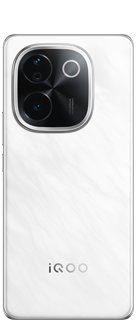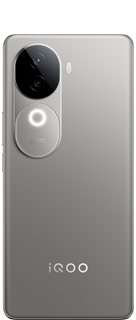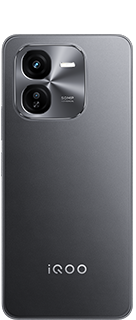The Quantum Leap: Google’s Willow Chip and the Future of Computing

For centuries, humanity has sought answers to the mysteries of the universe, building ever more powerful tools to solve the puzzles of existence. From rudimentary machines to today’s supercomputers, the journey has been an extraordinary one. Yet, even the most advanced supercomputers have their limitations, unable to tackle certain problems due to the vastness of calculations required. Enter Google’s latest breakthrough: the Willow chip, a quantum computer chip that promises to change the game forever.

What Makes Willow Special?
The Willow chip isn’t just a faster computer—it’s a fundamentally different one. It was tested on a problem so complex that the world’s fastest supercomputer would take 10 septillion years to solve it. To put that into perspective, 10 septillion years is over 700,000 times the age of our universe. Willow solved the same problem in just 5 minutes.
This isn’t just an incremental improvement; it’s a paradigm shift. Willow demonstrates the potential of quantum computing to tackle problems that are impossible for traditional computers, no matter how advanced.

How Do Computers and Quantum Computers Differ?
To understand why quantum computing is so revolutionary, let’s compare it to classical computing. Imagine you’re in a giant maze with many branching paths. A regular computer is like a single runner who explores the maze one path at a time. It starts at the entrance, moves through each pathway sequentially, and eventually finds the exit after a lot of trial and error.
A quantum computer, however, is like releasing a swarm of magical drones into the maze. These drones can explore all paths simultaneously, instantly identifying the correct one. This is possible because quantum computers leverage the unique properties of qubits. Unlike classical bits, which represent data as either 0 or 1, qubits can exist in multiple states at once, thanks to the phenomenon of superposition. Additionally, qubits use entanglement, a property that links them so the state of one qubit can instantly influence another, no matter the distance.
Supercomputers vs. Quantum Computers
Supercomputers, like Japan's Fugaku, are marvels of classical computing. They achieve their speed and power by using thousands of interconnected processors to perform billions of calculations per second. These machines are designed for tasks like simulating weather patterns, modeling protein structures, and analyzing massive datasets.

However, even the most advanced supercomputers hit a wall when faced with certain problems, such as factoring large numbers or simulating quantum systems. These problems require exponential increases in computing power, which is where quantum computers like Willow shine.
Potential Applications of Quantum Computing

- Quantum computers have the potential to revolutionize industries:
- Drug Discovery: Scientists can simulate molecular interactions at unprecedented speeds, accelerating the development of new medicines.
- Artificial Intelligence: Quantum computing can optimize machine learning algorithms, making AI smarter and more efficient.
- Weather Forecasting: With quantum speed, meteorologists could predict weather with near-perfect accuracy.
- Cryptography: Quantum computers can break traditional encryption methods, which has both positive and negative implications for cybersecurity.
- Material Science: They can help design new materials by simulating atomic structures more accurately.
Challenges of Quantum Computing
Despite its promise, quantum computing faces significant hurdles:
- Practicality: Google’s Willow chip is still experimental and not ready for real-world applications. It might take decades before quantum computers become mainstream.
- Fragility: Qubits require extremely low temperatures to function and are highly error-prone, necessitating error correction mechanisms.
- Security Risks: The immense power of quantum computers could render current encryption methods obsolete, posing a significant threat to data security.
The Global Race for Quantum Supremacy
Countries and corporations are heavily investing in quantum computing. The United States leads in innovation, with companies like Google and IBM driving breakthroughs. China, however, tops the investment chart, pouring $15 billion into quantum technology. Europe, Japan, and India are also building quantum ecosystems, with India investing $500 million to foster research and development.
A Cautious Step Forward
Quantum computing holds immense promise, offering solutions to some of humanity’s most complex challenges. Yet, its potential also raises ethical and practical concerns. As we unlock the capabilities of machines like Google’s Willow, the question isn’t just about what these computers can do, but how we choose to use them.
The Willow chip is a glimpse into the future—a future brimming with possibilities and challenges. The journey of quantum computing has just begun, and its impact will likely reshape our world in ways we can only imagine.
Signing off
Devasish Saikia
IQOO Ranger

@iQOOConnect@iQOOCare@ParakramHazarika@Nipun Marya@woahyash@Hasratsingh@ShankarSingh@SuhaniChawla@varunganjoo@Sourav@Anilyadav007@Inzamam@SameerShaikh@prasad.photos@JStreetS@Balajibalu_techie@MKJEDI@ayuu@YasirTheJOD@GokulNarain18@Gautamrawat_gsr@DhirajKumar@arjunbansal@TESVIPER10@HasanRazaKhan
@Cv18@Andybitts@Kvkartikji04@TechSAM009@Jabir007@RockyFTW@NaveenYerradla@sharon@Aojesh@RZNitin@Aojesh
@parakram_h @woahyash @balajibalu_techie @krishnavamsipulivarthi @xayushh_ @ronak5135 @prasad.photos @geroldpraveen @rohit4u_1983 @_imsameershaikh @gautamsinghrawat.gsr @milindmk07 @singhhasrat1048
Please sign in
Login and share
























